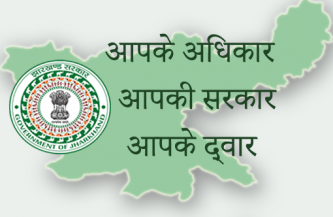The vision in Budget 2022

It would be apt to call the 2022-23 budget presented by Finance Minister Nirmala Sitharaman a “blueprint for India’s Amrit Kaal”. As India celebrates 75 years of Independence and prepares to spend the next 25 years in building its stature as a global power to reckon with, this budget will serve as the guiding light on India’s pathway to prosperity and international dominance.
Prime Minister Narendra Modi has been an unwavering votary of disrupting the status quo to ring in transformational change. The ideas he brings to governance put the citizen at the forefront of policy-making. The Union budget continues that tradition by bringing in several new ideas and fitting them snugly in the framework of government policies and expenditure.
The goals that the Modi government has set for the Amrit Kaal are ambitious, comprehensive and unambiguous. First, there is a focus on growth and all-inclusive welfare. Second, India will see technology-enabled development, and a comprehensive energy transition plan, coupled with climate action. Third, the government will push for a virtuous cycle of private investment, crowded in by public capital investment.
Four priorities define these goals – the PM Gati Shakti plan, a new vision for how infrastructure is developed in the country, inclusive development with the fruits of progress reaching the last person in society, innovative financing of investments and productivity enhancements and a focus on sunrise sectors. The budget outlines the government’s vision for these goals and priorities very ably and effectively.
This budget gives a thrust to strong infrastructure building. Under the PM Gati Shakti framework, the budgetary capital expenditure has been increased by 35 percent. Seven sectors of roads, railways, ports, airports, mass transit, waterways and logistics infrastructure will be the thrust of this record-high of Rs 7.5 lakh crore government asset-building push.
Another thing that will contribute immensely to India’s progress will be the focus on industrial development. The 14 production-linked incentive (PLI) schemes operationalised by the government will result in additional industrial output of Rs 30 lakh crore over the next five years and create 60 lakh new jobs. An additional allocation of Rs 19,500 crore has been made for the solar industry PLI scheme. This will also help India realise its goal of 280-gigawatt solar installed capacity by 2030.
The budget is not just about large-scale infrastructure and industrial vision. The government is working tirelessly to help the micro, small and medium enterprises, which have borne the brunt of the Covid-19 pandemic. An additional Rs 50,000 crore has been provided for the Emergency Credit Line Guarantee Scheme, which will be used exclusively for the hospitality and related sectors. This will benefit a beleaguered sector and help stabilise business operations as the tourism industry recovers.
Another interesting feature of the budget is creating specific, targeted development plans for different geographies based on the data and indicators available. A new scheme, the Prime Minister’s Development Initiative for North-East, has been proposed to be implemented via the North Eastern Council. In the spirit of the PM Gati Shakti plan, this scheme will fund local infrastructure However, the prioritisation and selection of the projects will be done by the states themselves. The decision-making and execution for this Rs 1,500 crore programme will be decentralised from end to end. Not only will this programme create better local accessibility, bringing jobs to the region, but will also demonstrate the true spirit of devolution and local empowerment.
In the spirit of cooperative federalism collaboration with the states is also reflected in a Rs 1.05 lakh crore support to the states for productive economic investments. These will be 50-year interest-free loans over and above the state borrowing, demonstrating true federalism and bereft of any political considerations. States will also benefit from central support on urban planning, which has been identified as key to improving ease of living.
River linking is a transformational idea that was put forward by the Atal Bihari Vajpayee government and has now been taken forward by the Modi government. Draft project reports of five river links, namely the Damanganga-Pinjal, the Par-Tapi-Narmada. The Godavari-Krishna, the Krishna-Pennar and the Pennar-Cauvery have been finalised. These projects will immensely benefit the southern states.
The budget lays the path not only for a “Digital India”, but also for a “Digital First India”. Be it banking, education, agriculture, health or skill development, digital will be the backbone for India’s socio economic transformation. For each sector, the budget offers specific interventions and a futuristic vision of how the J-curve of productivity can be unleashed.
The taxation proposals reflect the government’s view of balancing the precarious pandemic situation and the need for constant improvements on the margins. Capital gains being capped at 15 percent will help unleash a wave of angel investments in Indian start ups. This will help develop a new asset class for those who are able to invest in emerging businesses. As the service economy opens up further and activities like travel and tourism pick up, the goods and services tax collection will continue to build on a robust base. The Finance Minister has also proposed a realistic fiscal deficit target given the current scenario. This is indeed a commendable achievement.
The Modi government has shown that budgets need not only be accounting documents. They can be the engineering drawings for nation-building.
[The blog was first published in the Indian Express and is written by Minister of Tourism, Culture and Development of North Eastern Region of India, Shri G. Kishan Reddy]





